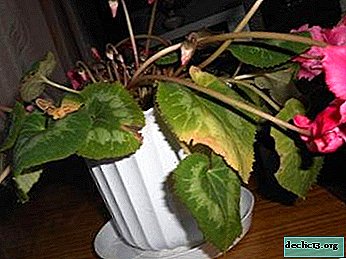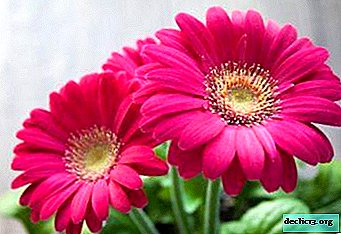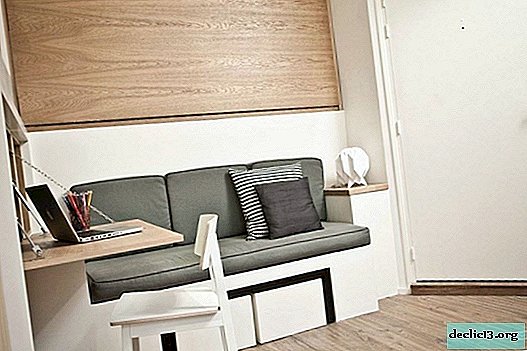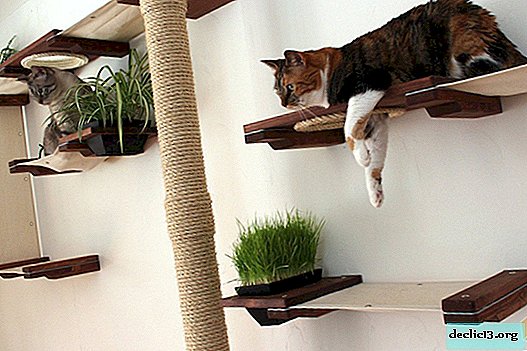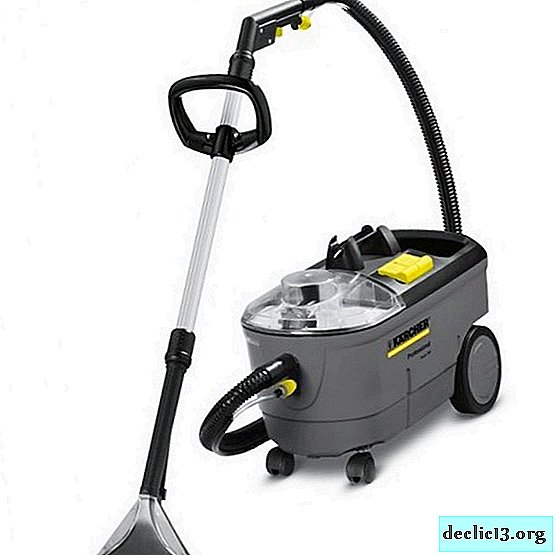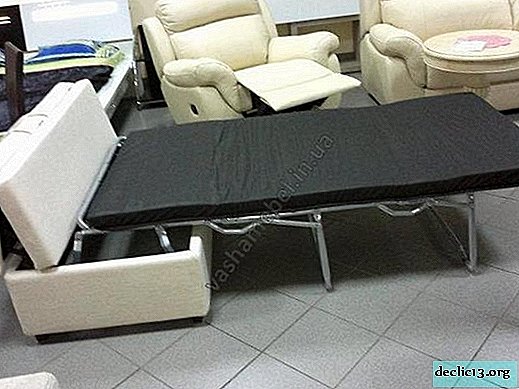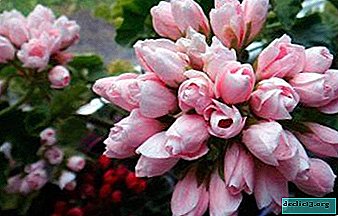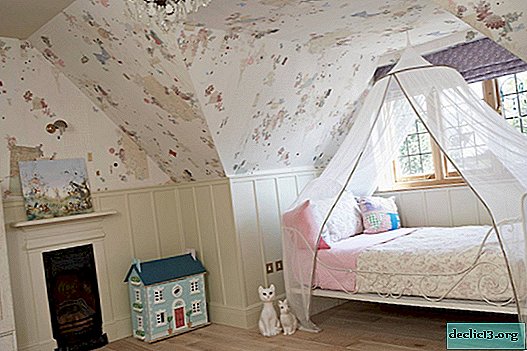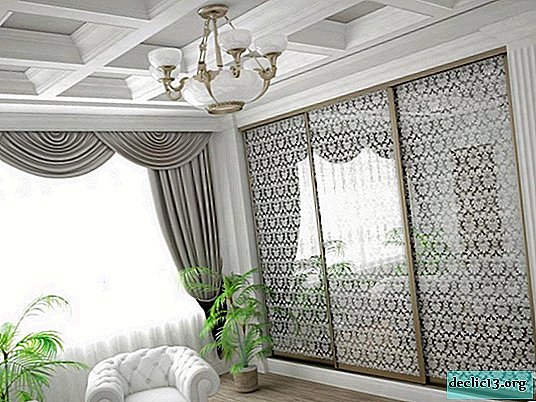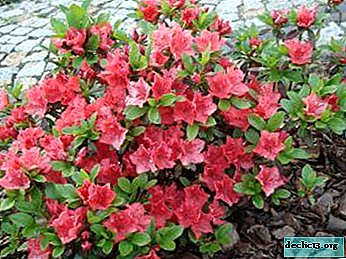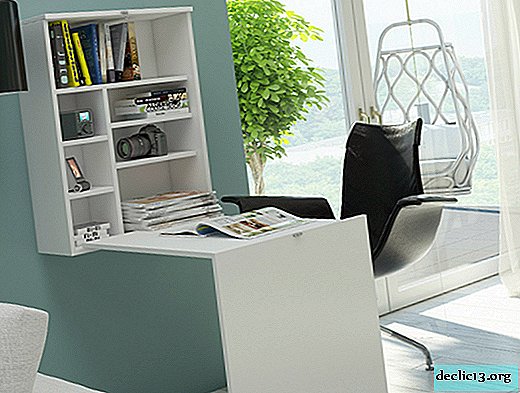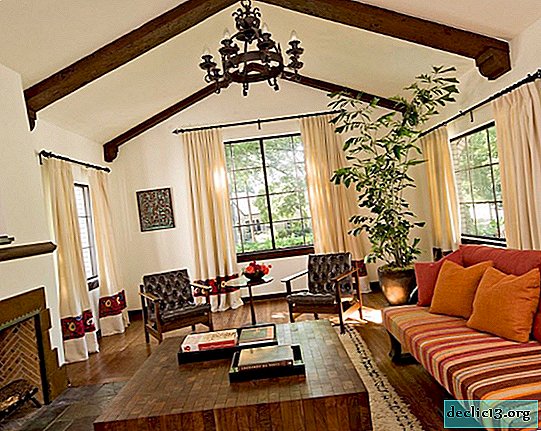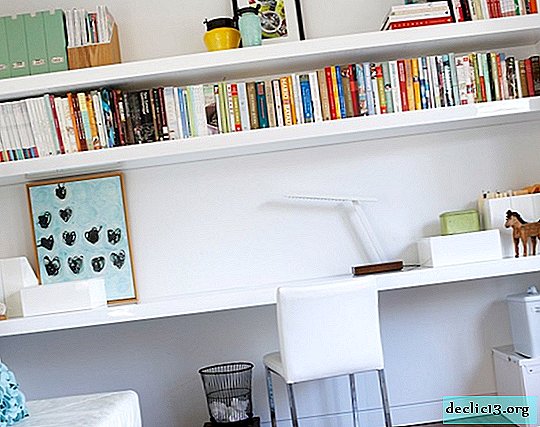Ideas for storing toys in a nursery
The Soviet child could do with a set of cubes, a tumbler and a ball. But in most cases, this approach was caused not so much by the position of the parents, as by the shortage of stores and the inability to expand the range of toys. An incredible, huge world of toys opens before a modern child, the diversity of which is difficult to imagine. Even if parents are restrained in buying new plush friends, a designer, cars or dolls for their child, relatives and friends are always ready to come to the rescue and fill the children's room “to the eyeballs”. That is why in the child’s room it is important to organize not only systematized, but also convenient storage for toys for a small owner. The children's room in most Russian apartments can rarely be called a spacious room, and the proper organization of all functional segments is necessary to create an ergonomic, convenient to use and care environment.


In conditions of austerity of space, various design techniques are used - from built-in storage systems to the use of retractable structures under the beds. Boxes, chests, ottomans with storage space, mobile boxes on wheels - all these devices can help not only organize a systematic storage of toys and sports equipment in the children's room, but together with the child show their design abilities.


Proper storage: ergonomics, systematization, convenience and aesthetics
In order not to step on the small details of the designer for the hundredth time, so that endless cubes do not creep around the house, and puzzles are securely hidden in their boxes, parents have to make a lot of effort. But let's first determine the age of the child, because it largely depends on whether he can maintain order in his room:
- for a child under 1 year old, as a rule, parents give out toys, most often there are not many of them and they are placed within the arena, game table or rug. For such an amount, one box is enough (plastic, wooden, fabric on a rigid frame or wicker). Such a box can be equipped with wheels, a lid - for ease of use and simplify the process of maintaining order;

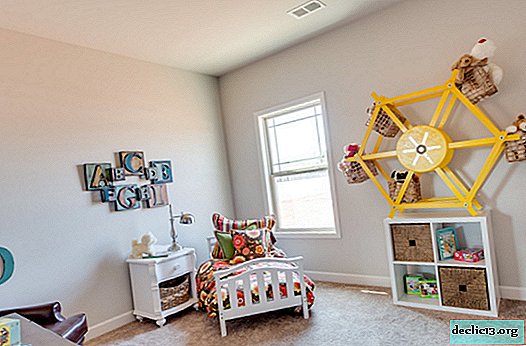 The most difficult age from the point of view of the scale of populating a children's room with toys is from 1.5–2 years to 5.5–6. During this period, games are the main source of information, knowledge of the world and their abilities. There are a lot of toys, they are different in size, functions, and the choice of storage method. Therefore, storage systems should be several or one large, but consisting of several blocks. This approach is connected not only with quantity, but also with the fact that at an early age toys bother a child quite quickly (it’s unlikely that your child will play with one machine for more than half an hour), so it’s better to put some items for games on the upper shelves. Dolls or cars returned from the mezzanine will be perceived as new, and the daily flow of toys will not be large-scale - the child himself will be able to remove several items;
The most difficult age from the point of view of the scale of populating a children's room with toys is from 1.5–2 years to 5.5–6. During this period, games are the main source of information, knowledge of the world and their abilities. There are a lot of toys, they are different in size, functions, and the choice of storage method. Therefore, storage systems should be several or one large, but consisting of several blocks. This approach is connected not only with quantity, but also with the fact that at an early age toys bother a child quite quickly (it’s unlikely that your child will play with one machine for more than half an hour), so it’s better to put some items for games on the upper shelves. Dolls or cars returned from the mezzanine will be perceived as new, and the daily flow of toys will not be large-scale - the child himself will be able to remove several items; 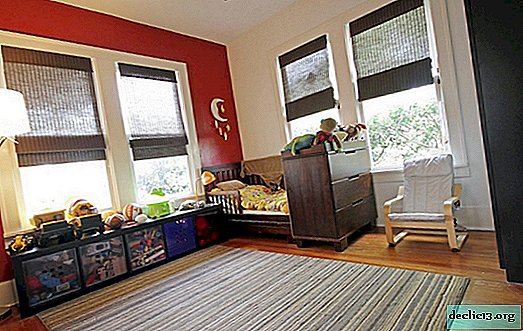
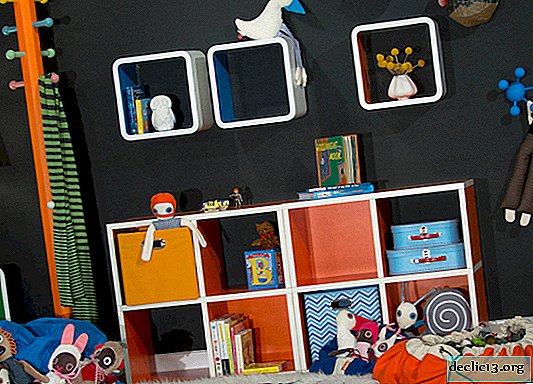
 from 6 to 10 (all individually, some children continue to play actively even after several years of schooling) the number of toys decreases, the child himself can remove all items for games even on the upper shelves and often just does not allow parents to clean up his room. Some storage systems are exempt from toys and deal with books, sports equipment, board games;
from 6 to 10 (all individually, some children continue to play actively even after several years of schooling) the number of toys decreases, the child himself can remove all items for games even on the upper shelves and often just does not allow parents to clean up his room. Some storage systems are exempt from toys and deal with books, sports equipment, board games;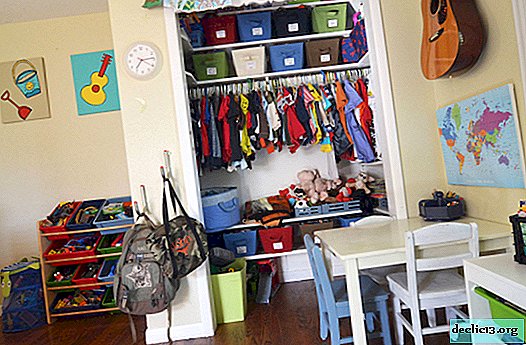
 after 10 years, most often only toys remain in the child’s room, which are collectibles or truly “adult” games. But for their storage, usually a couple of open shelves or one drawer in the closet is enough.
after 10 years, most often only toys remain in the child’s room, which are collectibles or truly “adult” games. But for their storage, usually a couple of open shelves or one drawer in the closet is enough.


When choosing storage systems for a children's room, it is important to consider the following criteria:
- environmental safety for humans and the environment;
- safety from the point of view of operation without injuries - the younger the child, the simpler the design should be (no glass or mirror inserts in the cabinet doors in the baby’s room, the smaller the fittings - the better);
- ease of care - it will be difficult to avoid traces of sticky fingers, juice, plasticine and pencils, therefore it is better to initially consider the possibility of quick and easy cleaning of surfaces;
- the storage system should stylistically fit into the general outline of the design of the room;
- if the child is already old enough to talk about his preferences, then the choice of any interior items for his room is best done together with him.



Toy Storage Options
One of the simplest and most universal ways to create storage systems is to use open shelves. They do not take up much space in terms of using the usable space of the room, only a free wall or part of it is needed. The advantage of open shelves is that all the toys will be in front of the child and he will be able to take them himself. The disadvantages are rather operational features - parents will have to wash their dust off the open surfaces of shelves at times more often.


In order to organize the storage of toys and parts for them, you will need containers. The assortment of modern stores is striking in its choice - each parent will be able to find their best option in terms of cost, design and color scheme. Fabric and wicker, plastic and wooden - containers (almost everything can be marked) will help you sort the toys, and clean up the room. In fact, children love sorting, shifting small toys or structural elements into their “houses” can be a great game, rather than a boring duty to restore order.




Having slightly complicated the design of the open shelves and putting all the elements together, we get a rack. The advantage of such furniture is the simplicity of assembly of the finished solution, compactness in depth and spaciousness, given the height of the structure. Another plus of using racks is that instead of toys, books, board games and various office supplies will appear on its shelves over time. This means that it will not be necessary to acquire new storage systems for an already grown child (schoolchild).



Shelves can consist of either ordinary open shelves or a set of cells in which you can simply put toys or insert containers. Such a rack can be attached directly to the wall, in case it does not have a common rear wall. The dimensions of the rack depend on the capabilities of the room, the number of toys that will be stored there and the general nature of the interior design. Most often, white color is used for the execution of massive shelving - it does not burden the image of the room, even in the case of a massive structure. In addition, there will be plenty of bright colors in the room, because the toys will be placed on open shelves.




Using built-in racks, you can not only not worry about fixing the structure to the wall, but also save the usable space of the children's room, which is important in small-sized dwellings. Most often, such racks have closed boxes with swing doors in the lower part, and the entire upper part is represented by open shelves with different or equal heights. It all depends on the size of the toys that will be placed on the shelves.



Low open boxes-shelving with cells - a great way to store toys in the baby's room. The design has no doors, which means that your baby will not be able to pinch your fingers - the complete lack of fittings and excellent module stability provide a high degree of security. The child himself will be able to get toys, because the model is low. At the same time, it will be possible to sort the toys into cells, depending on the size, nature of the manipulations performed, or any other sign that the little owner of the room will like.




An original and at the same time practical from the point of view of operation piece of furniture in the children's room is a wardrobe with large openings in the doors. Even a small child will not have problems opening such doors; through large openings it is clearly visible on which shelf the necessary toy is standing. Such a model becomes not only a storage system, but also an original element of the interior of a children's room.



Chests, boxes and boxes of various modifications can be both the only ones (in the room of kids with a small number of toys), and additional storage systems. The convenience of such designs is that they are mobile - you can always remove the chest to the wall to increase the free area for games. Often such boxes with lids are equipped with wheels so that even a child can carry out a simple rearrangement. Another advantage of chests is that they can be used as a seat if you put a soft backing on the lid. But there are also drawbacks to such storage systems - to systematize storage, most likely it will not work, inside all the toys will lie on a shaft.



A compact version of the chest is a pouf with storage space. Many toys will not fit in his cavity, but he can easily move around the room with the help of wheels and can serve as a place for the guests of the child to sit. As an additional storage system, it is suitable even for medium and small rooms.


In conditions of austerity of usable space, any possibility of organizing storage systems is expensive. In particular, ate more than one child in the room. The space under the bed cannot be empty. Whether the storage systems under the bed will be ordinary containers or drawers on casters, or maybe the design of the berth itself will involve sliding blocks - in any case, there is no doubt about the rationality of this decision.


And finally. If the space of the children's room allows, then the best option for creating storage systems for toys is the use of various modifications. Drawers under the bed, a rack with open shelves and cells for organizing toys, a box or chest at the foot of the bed, a mobile pouf with storage space - all these devices will help not only to distribute the entire collection of toys, but also to accustom the child to self-restoring order.





 The most difficult age from the point of view of the scale of populating a children's room with toys is from 1.5–2 years to 5.5–6. During this period, games are the main source of information, knowledge of the world and their abilities. There are a lot of toys, they are different in size, functions, and the choice of storage method. Therefore, storage systems should be several or one large, but consisting of several blocks. This approach is connected not only with quantity, but also with the fact that at an early age toys bother a child quite quickly (it’s unlikely that your child will play with one machine for more than half an hour), so it’s better to put some items for games on the upper shelves. Dolls or cars returned from the mezzanine will be perceived as new, and the daily flow of toys will not be large-scale - the child himself will be able to remove several items;
The most difficult age from the point of view of the scale of populating a children's room with toys is from 1.5–2 years to 5.5–6. During this period, games are the main source of information, knowledge of the world and their abilities. There are a lot of toys, they are different in size, functions, and the choice of storage method. Therefore, storage systems should be several or one large, but consisting of several blocks. This approach is connected not only with quantity, but also with the fact that at an early age toys bother a child quite quickly (it’s unlikely that your child will play with one machine for more than half an hour), so it’s better to put some items for games on the upper shelves. Dolls or cars returned from the mezzanine will be perceived as new, and the daily flow of toys will not be large-scale - the child himself will be able to remove several items;

 from 6 to 10 (all individually, some children continue to play actively even after several years of schooling) the number of toys decreases, the child himself can remove all items for games even on the upper shelves and often just does not allow parents to clean up his room. Some storage systems are exempt from toys and deal with books, sports equipment, board games;
from 6 to 10 (all individually, some children continue to play actively even after several years of schooling) the number of toys decreases, the child himself can remove all items for games even on the upper shelves and often just does not allow parents to clean up his room. Some storage systems are exempt from toys and deal with books, sports equipment, board games;
 after 10 years, most often only toys remain in the child’s room, which are collectibles or truly “adult” games. But for their storage, usually a couple of open shelves or one drawer in the closet is enough.
after 10 years, most often only toys remain in the child’s room, which are collectibles or truly “adult” games. But for their storage, usually a couple of open shelves or one drawer in the closet is enough.